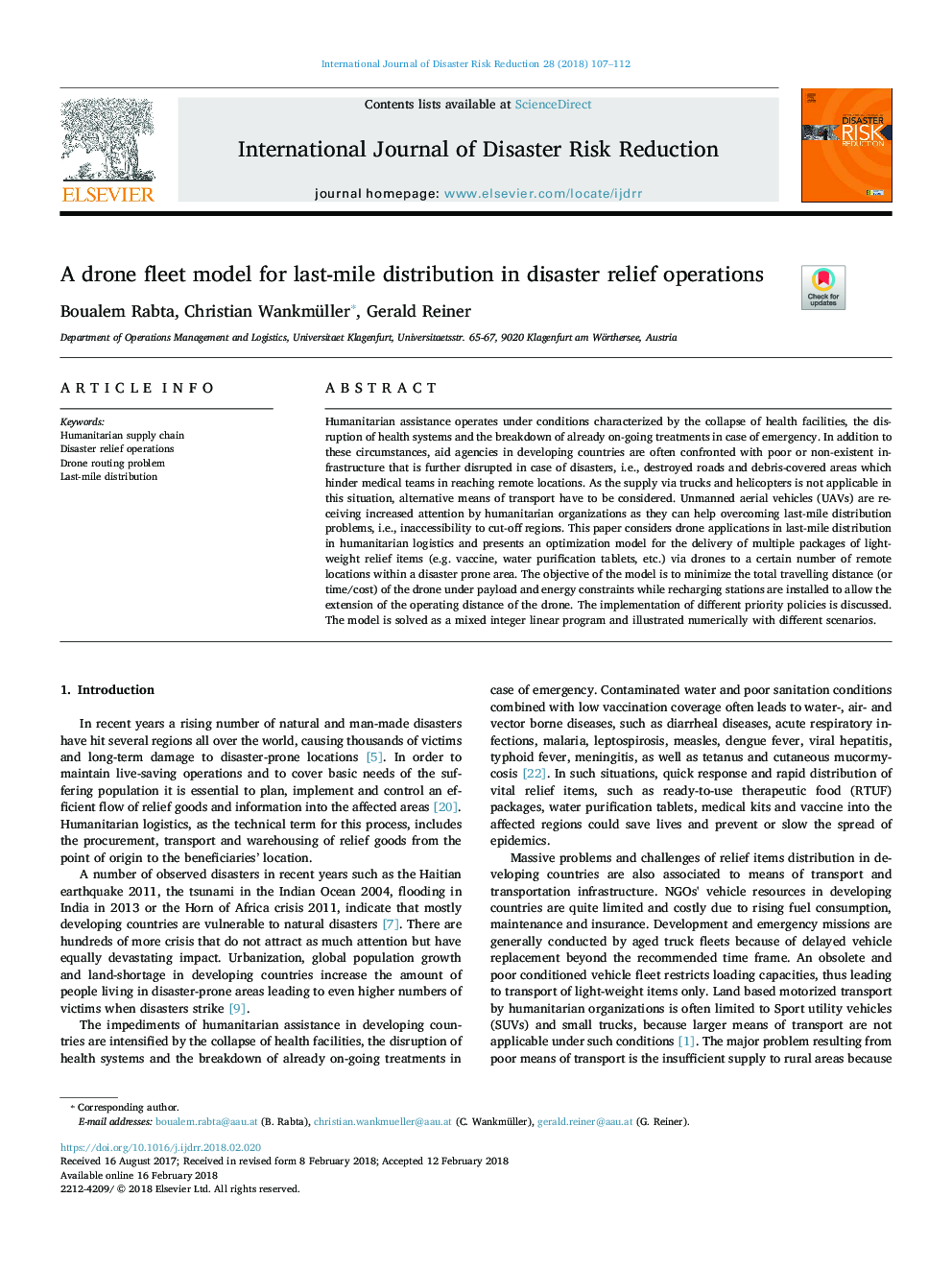| Article ID | Journal | Published Year | Pages | File Type |
|---|---|---|---|---|
| 7471473 | International Journal of Disaster Risk Reduction | 2018 | 6 Pages |
Abstract
Humanitarian assistance operates under conditions characterized by the collapse of health facilities, the disruption of health systems and the breakdown of already on-going treatments in case of emergency. In addition to these circumstances, aid agencies in developing countries are often confronted with poor or non-existent infrastructure that is further disrupted in case of disasters, i.e., destroyed roads and debris-covered areas which hinder medical teams in reaching remote locations. As the supply via trucks and helicopters is not applicable in this situation, alternative means of transport have to be considered. Unmanned aerial vehicles (UAVs) are receiving increased attention by humanitarian organizations as they can help overcoming last-mile distribution problems, i.e., inaccessibility to cut-off regions. This paper considers drone applications in last-mile distribution in humanitarian logistics and presents an optimization model for the delivery of multiple packages of light-weight relief items (e.g. vaccine, water purification tablets, etc.) via drones to a certain number of remote locations within a disaster prone area. The objective of the model is to minimize the total travelling distance (or time/cost) of the drone under payload and energy constraints while recharging stations are installed to allow the extension of the operating distance of the drone. The implementation of different priority policies is discussed. The model is solved as a mixed integer linear program and illustrated numerically with different scenarios.
Keywords
Related Topics
Physical Sciences and Engineering
Earth and Planetary Sciences
Geophysics
Authors
Boualem Rabta, Christian Wankmüller, Gerald Reiner,
